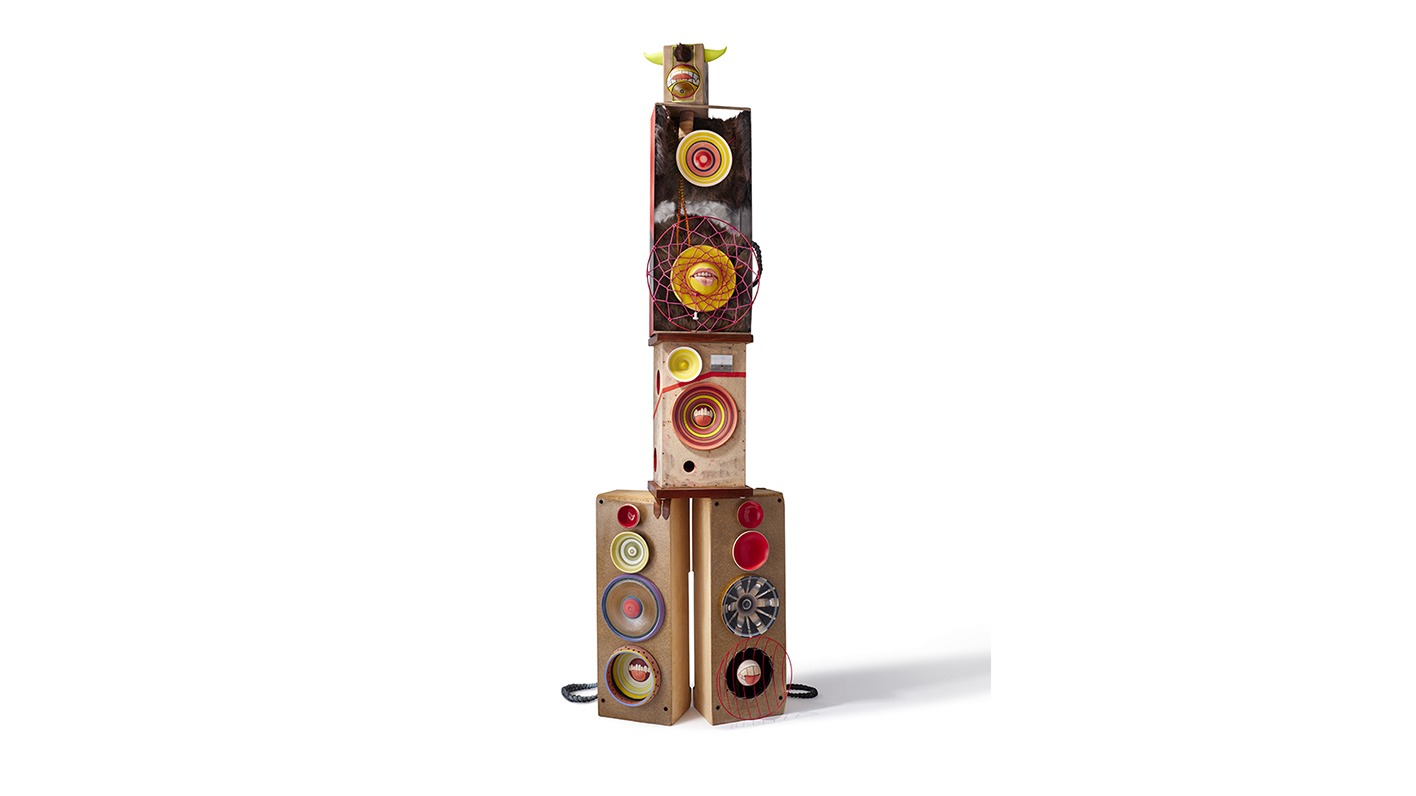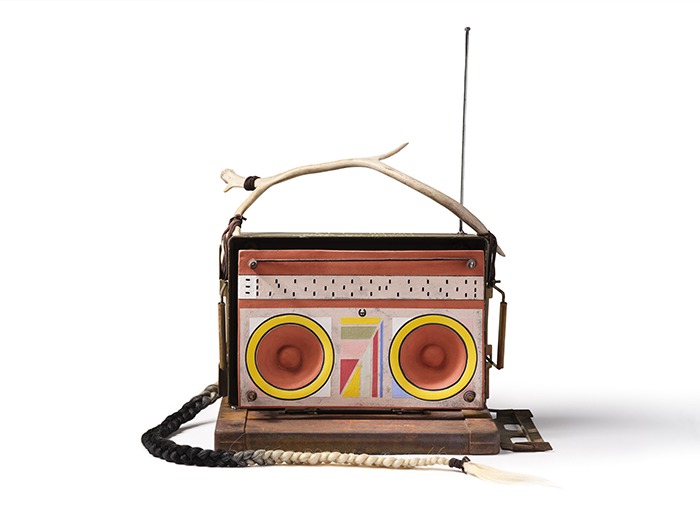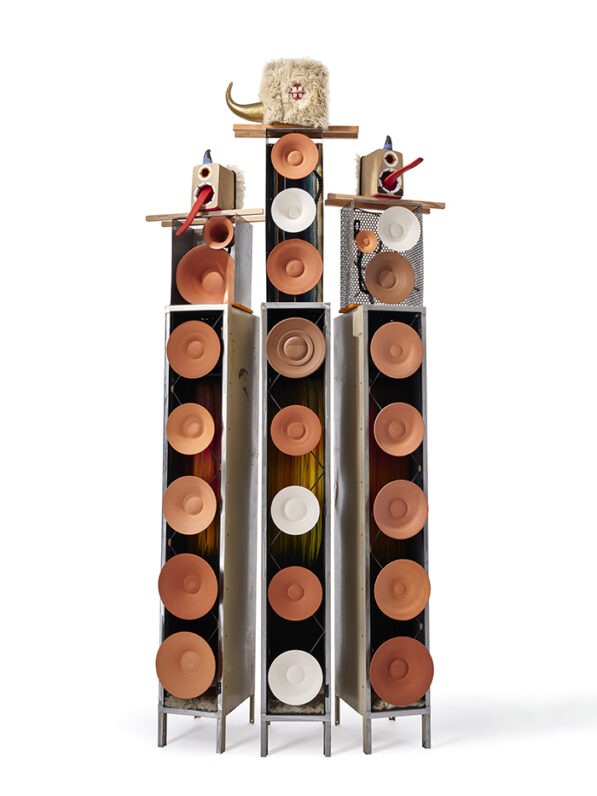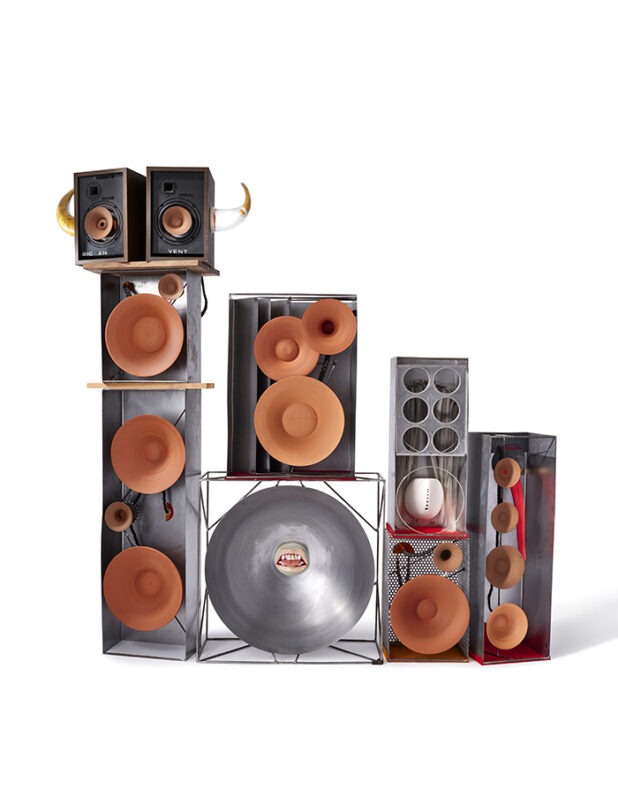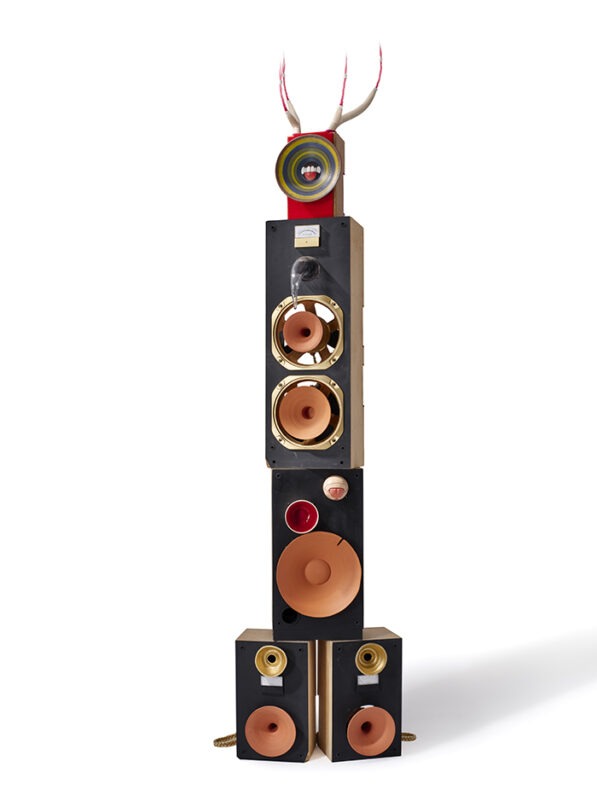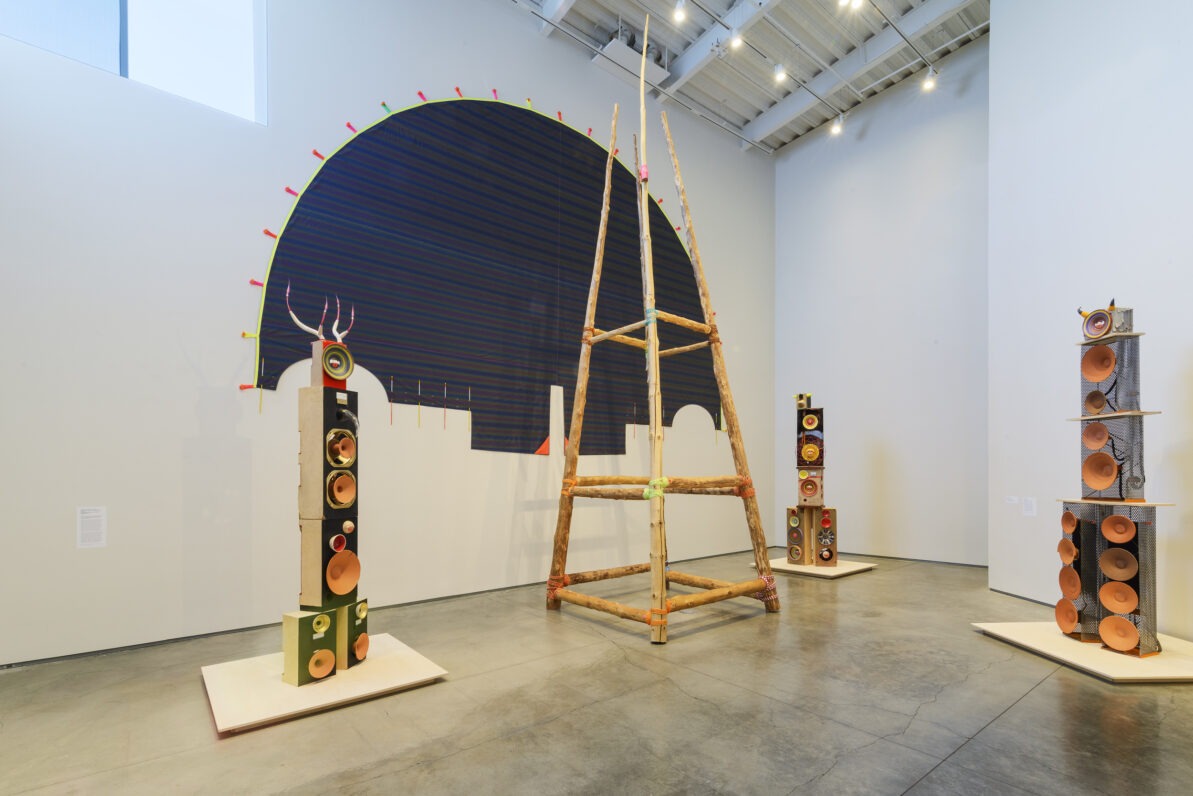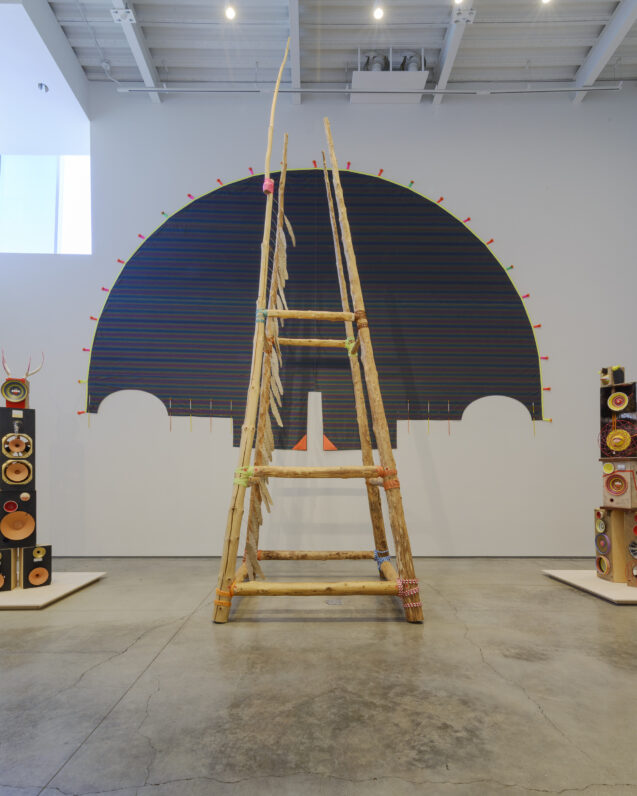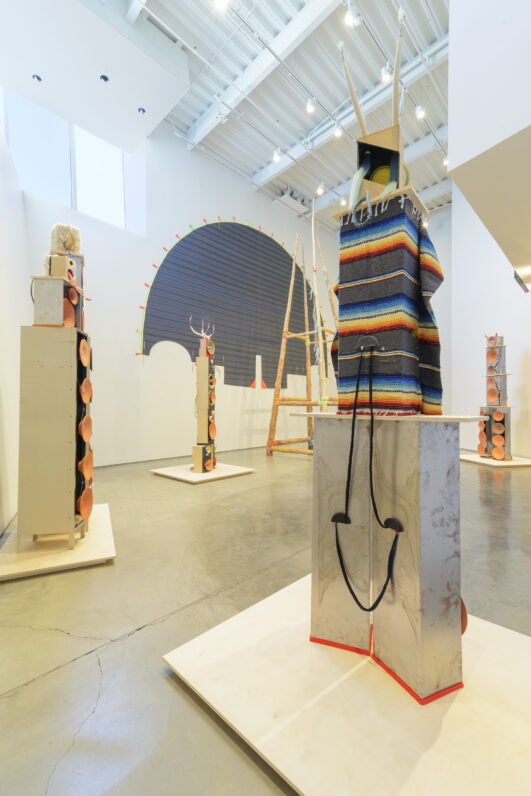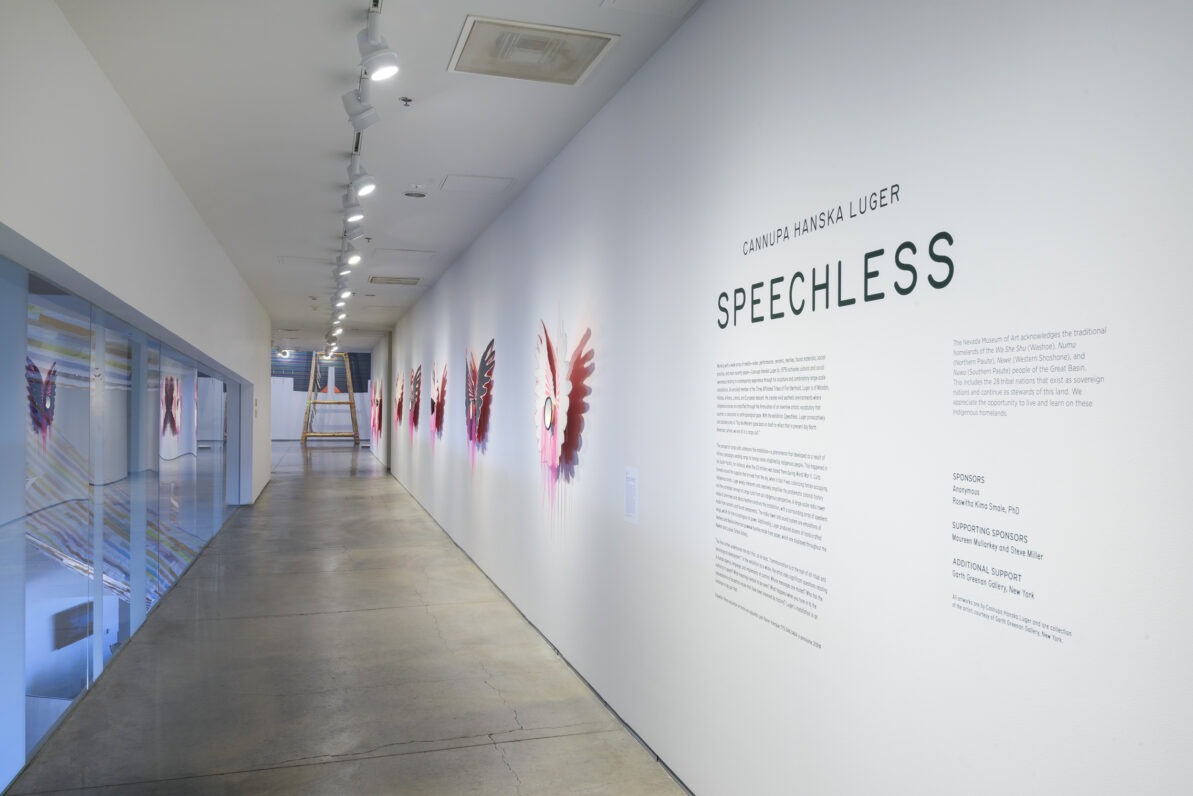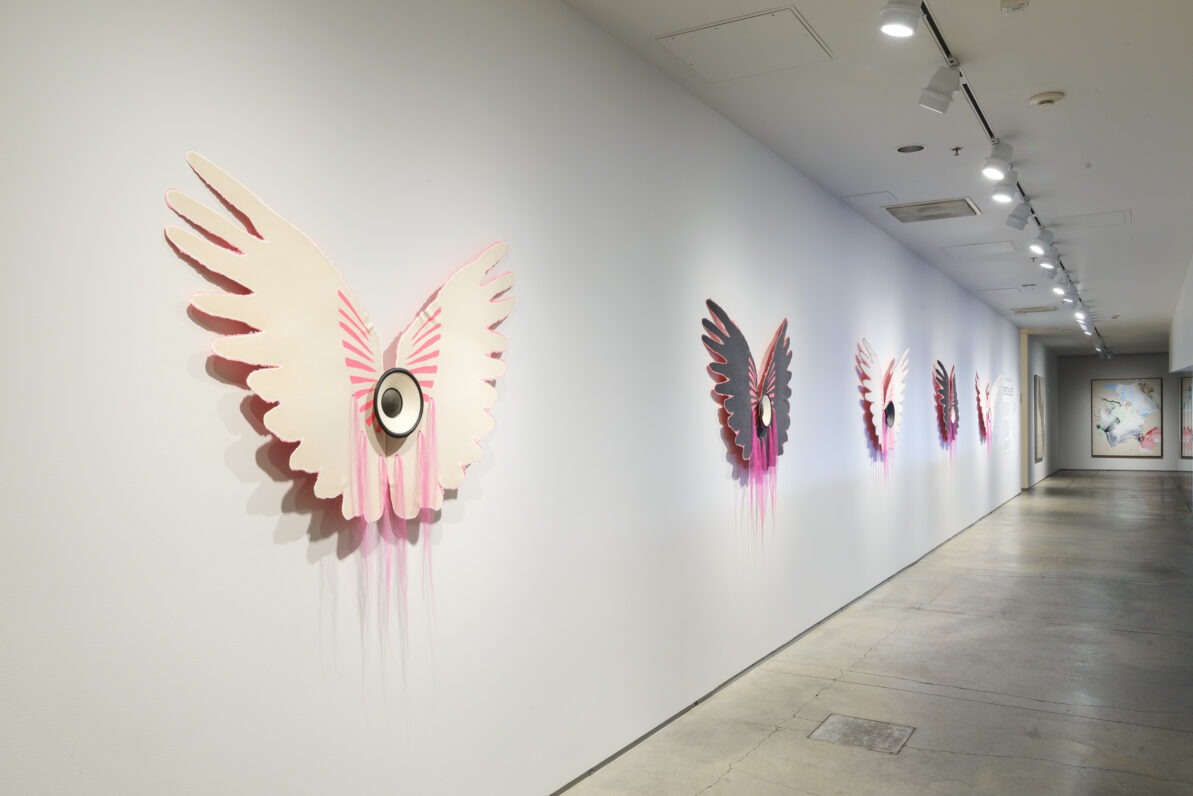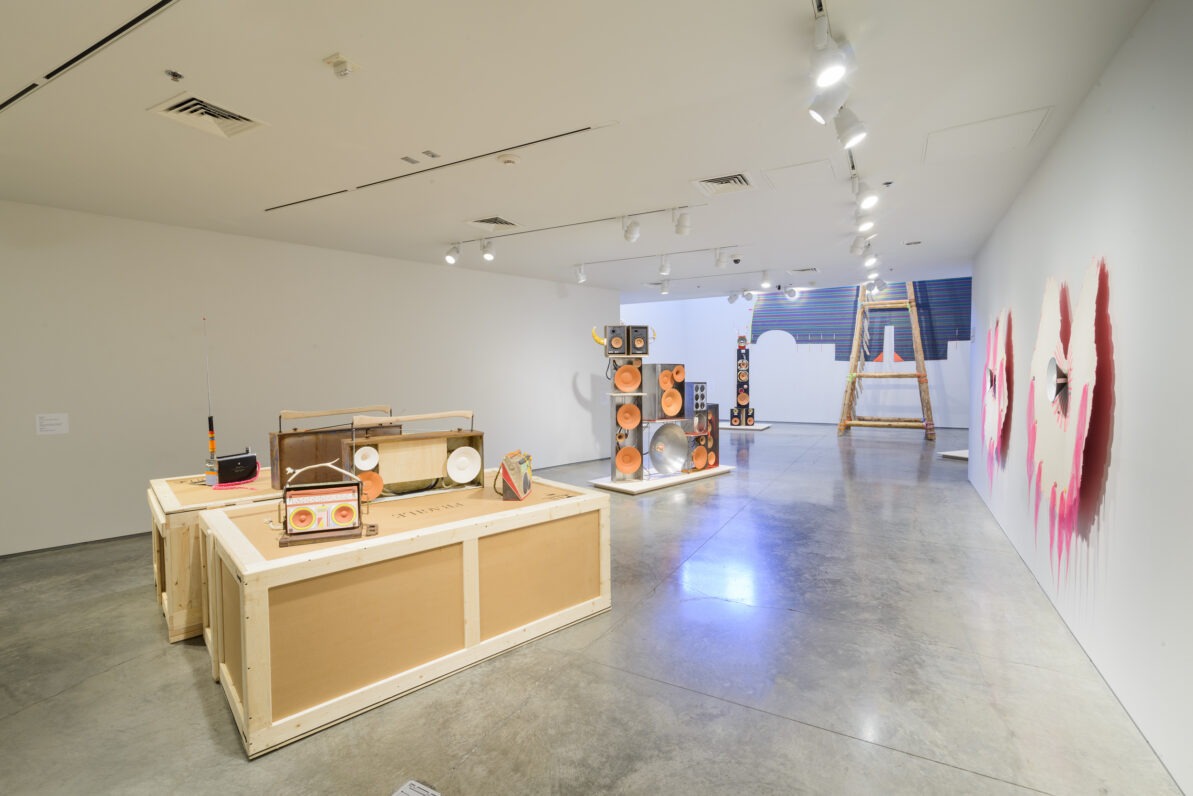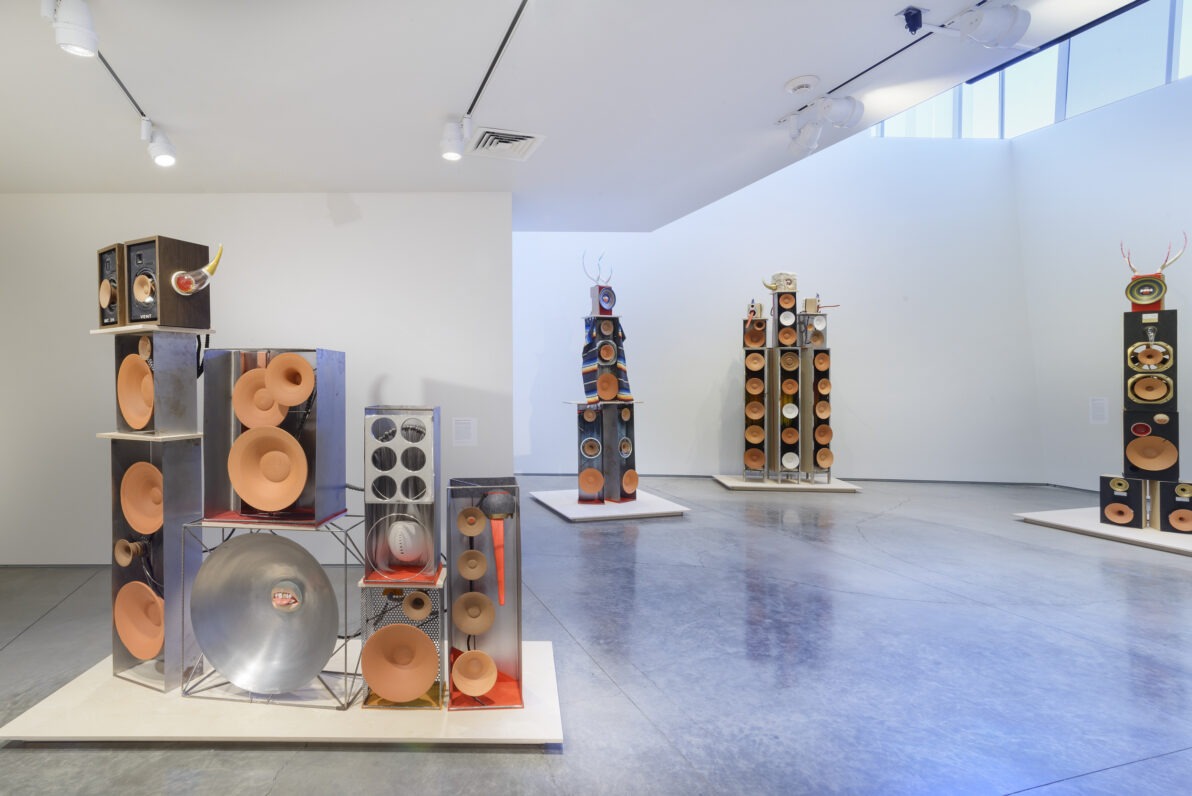Cannupa Hanska Luger: Speechless is on view in Durham, North Carolina at the Nasher Museum of Art at Duke University, from February 13 – July 6, 2025.
This exhibition features the multi-disciplinary work of Cannupa Hanska Luger (b. 1979), an artist who is an enrolled member of the Three Affiliated Tribes of Fort Berthold and is of Mandan, Hidatsa, Arikara, Lakota, and European descent. Working with a wide array of media—video, performance, ceramic, textiles, found materials, and most recently paper—Luger activates cultural and social awareness relating to contemporary experience through his combinatory large-scale installations. He creates vivid aesthetic environments where Indigenous voices are amplified and rediscovered through the formulation of his inventive artistic vocabulary that counters a colonialist or anthropological gaze.
As part of a recent residency at Dieu Donné in New York, Luger produced dozens of hand-crafted feathers made from paper, which will be displayed throughout the Newton and Louise Tarble Gallery, along with Native American bustles made with the feathers. A large-scale radio tower made of pine trees, feathers, and found objects will anchor the installation, with a surrounding array of speakers made from ceramic components. The concept of cargo cults underpins the installation—a phenomenon that developed as a result of military campaigns sending cargo to foreign lands inhabited by Indigenous people. This happened in the South Pacific, for instance, when the US military was based there during World War II. Cults formed around the supplies that arrived from the sky, when in fact it was colonizing forces occupying Indigenous lands. In Speechless, Luger provocatively interprets and creatively amplifies the problematic colonial history and the contested concept of cargo cults from an Indigenous perspective. The title further underscores the fact that, in the words of Luger, “communication is at the root of all ritual and technological development.” The exhibition asks important questions relating to human agency, language, and implements of control. Who gets to speak? Who has to bite their tongue? Whose messages are muted? What meanings remain to be discovered? Luger asserts that the concept of the exhibition “flips the Western gaze back on itself to reflect that in present day North American culture, we are all in a cargo cult.”
The exhibition is part of Luger’s ongoing project, Future Ancestral Technologies (FAT) that explores Indigenous futures presented through a lens of speculative fiction. In the project, he probes how to share technology with his ancestors as we move into a time where the environment becomes an increasingly important, even desperate concern. Luger describes FAT as “a methodology, a practice, and a way of future dreaming that harnesses the power of science fiction to shape collective thinking and reimagine the future on a global scale.” The natural world is a critical element of this work as realized through the direct relationship he and his ancestors had with the land, the nomadic technologies Indigenous people developed, and the sacred places to which they formed connections. Cumulatively, Luger’s work encourages us to think about the earth, not as a possession that humans dominate, but rather as something omnipresent with which humans must restore their bonds. “Sustaining ourselves means belonging to the environment,” he has stated.
For the duration of the exhibition, tribal communities will be offered free admission.
Sponsors
Anonymous
Roswitha Kima Smale, PhD
Supporting Sponsors
Maureen Mullarkey and Steve Miller
Additional Support
Garth Greenan Gallery, New York
